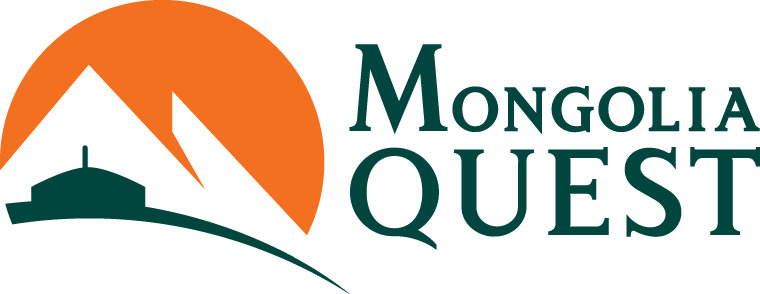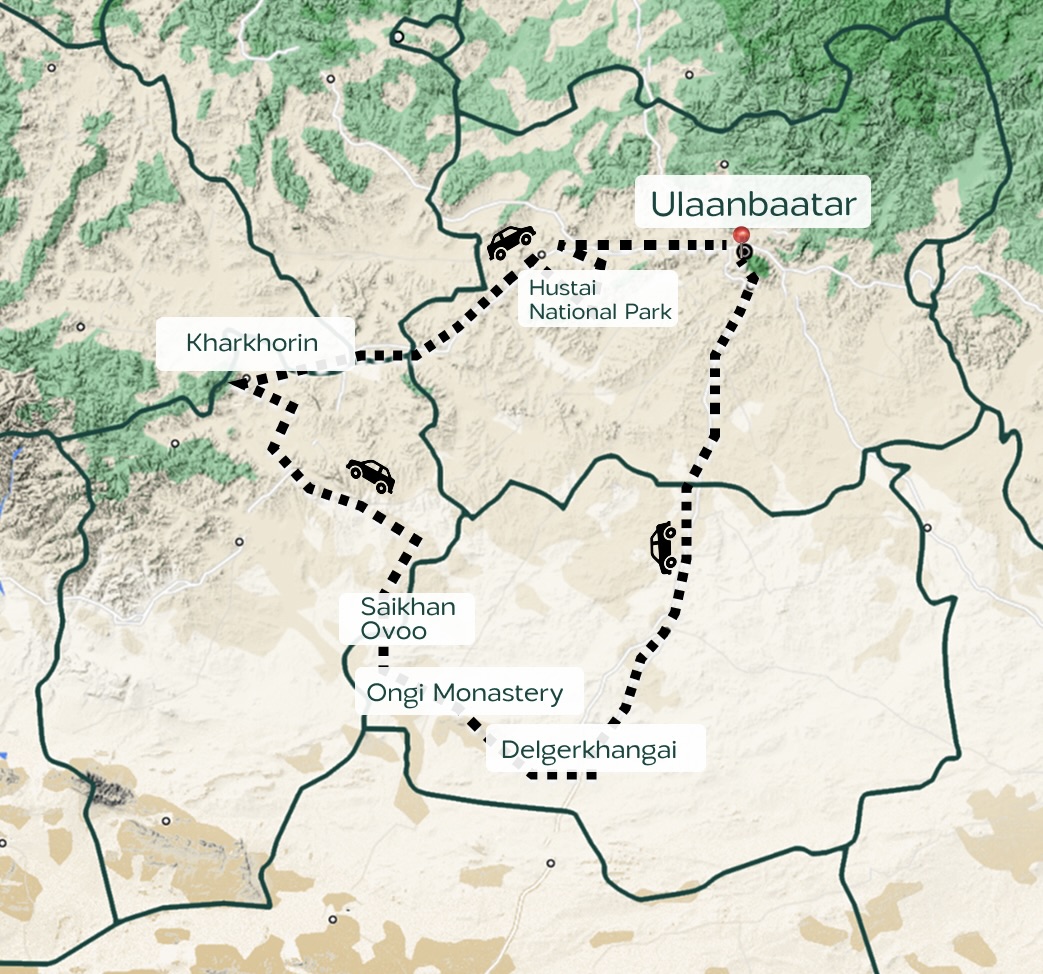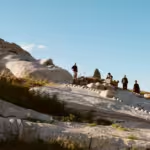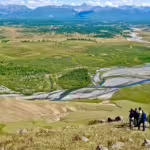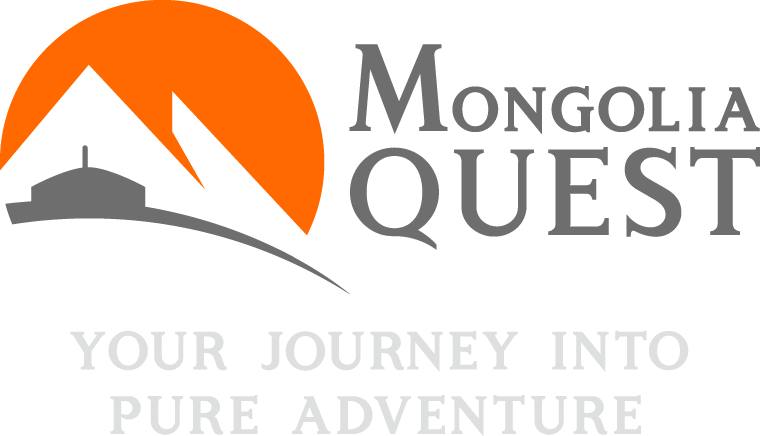TRIP SUMMARY
In the modern world of computers, internet and space technologies it is difficult to find a moment to look around us more carefully, to meet ordinary people from different cultures and to remember why we are here and what are the basic human values that matter. This quest, which traverses through Mongolia’s least known parts of the Gobi Desert and central steppes, is dedicated to adventurers who like to travel with a cause and learn about local cultures deeper than a regular visitor has a chance to. More importantly, it is designed to give you an opportunity to make your personal input and contributions into the growth of local communities and advancing their causes. We will be able to help a local school in a remote village, assist in rebuilding an ancient monastery, learn about a grassroots conservation movement well known around the country and, help biologists and rangers of a local park to conduct their daily duties. If you deeply care and concerned about conserving endemic cultures around the world and learn about Mongolia deeper than an ordinary visitor, then this quest might be suitable for you.
TRIP HIGHLIGHTS
WHAT YOU CAN EXPECT…
-
Travel to the Orkhon Valley, considered as the cradle of Mongolian civilization and visit Kharakhorum, the site of 13th century Mongolian capital city;
-
Enjoy exploring Erdenezuu, Shankh and Ongi monasteries, crown jewels of Mongolian Buddhist heritage;
-
Visit some of Gobi’s least known regions and spend a quality time with traditional horse herder family;
-
Experience living with a nomad and learn about their daily life;
-
Enjoy exploring the mountain, steppe and desert ecosystem of the Gobi desert;
-
Enjoy meeting with nomads and exploring the nomadic culture of Mongolia.
THIS TRIP IS PERFECT FOR…
- History Enthusiasts;
- Buddhist Heritage Admirers;
- Cultural Immersion Seekers;
- Nature Lovers;
- Adventure and Off-the-Beaten-Path Travelers.
MAP & ITINERARY
Upon arrival, meet your guide and transfer to a centrally located hotel in downtown Ulaanbaatar. In the evening, enjoy welcome dinner in one of the fine restaurants of Ulaanbaatar.
Overnight at the hotel. (Hotel Shangri La or similar; D)
We will begin driving south the Gobi desert. After a picnic lunch along the way, we will arrive at Delgerkhangai soum late in the afternoon. Delgerkhangai is one of the most scenic county towns in the region. It is overlooked by the mighty Delgerkhangai Mountain, which is home to Gobi’s elusive ibex or the mountain wild goat as well as numerous archeological findings. We will stay overnight in a tent camp not far from the town. Enjoy an expedition style dinner in the evening.
(Approx. 7 hours driving; Overnight in tents; B, L, D)
After an early morning Gobi sunrise and breakfast, travel to the county soum and enjoy a tour of the local school complex which encompasses the elementary, middle and high school of the region. We will work to make one of the class rooms turn into a colourful English language learning cabinet for the school kids of all ages. Enjoy a same lunch offered to the dormetary students of the town. Return to the camp and enjoy dinner.
(Overnight in tents; B, L, D)
In the morning, we will learn how airag (mares milk drink) is made, from milking the mares to fermenting the milk. Later, we will help to collect local onion plan known as “khomuul” and learn how to salt it for winter consumption. In the afternoon, we will drive to the foothills of the mountain and enjoy hiking to the tallest of the peaks. Return to the base camp in time for dinner.
(Overnight in tents; B, L, D)
Today, we will begin our short overland journey west to the Ongi Monastery. In the morning, we will reach the ruins of Ongi Monastery, located on the northern tip of the Gobi desert. Ongi Monastery, once called the “Pearl of the Gobi,” was on the crossroads of Central Asian Tea Road camel caravans. We will explore the monastery ruins and surrounding hills on foot and stay in a ger camp located on the Ongi riverbanks.
(Approx. 2 hours driving; Ger Camp; B, L, D)
Starting from mid 90s of the last century lama Bat-erdene single handedly has been working to bring this once flourishing Buddhist center back to life. Over past 20 odd years he had taught basics of Buddhist teachings to over 30 local kids and many of them now study in India and elsewhere to be coming back to help out their teacher. Recently the founding lama of this monastery Barigri Damtsagdorj has been reincarnated in the Gobi and once again there is hope that this place will come back to life in the nearest future. Each year lama Bat-erdene identifies scope of work to be accomplished around the monastery grounds and struggles to raise funds and recruit physical help. Today we will have an opportunity to meet lama Baterdene and volunteer our help to the project of his choice.
Overnight at local ger camp. (Ger Camp, B, L, D)
Ongi river is one of few which flows down to the Gobi desert. For millennia it was feeding the Ulaan lake encompassing an area of over 30 square km at some point. It is mentioned in historic books describing the Genghis Khan conquests. However because of unrestricted mining activities in the country the only river feeding it was disrupted and in a matter of few years the lake dried up. Today we will have chance to meet some of the local activists who have started the Ongi River movement back in 1999. Thanks to them some 36 mines were closed one year and the river Ongi came back after being disrupted for few years. The leader of the movement Mr. Munkhbayar Tsestgee had received Goldman prize for his role. Visit various projects run by the organization and meet herder members who are learning to grow vegetables and berries to supplement their income. Dinner and overnight in the ger camp.
(Ger Camp, B, L, D)
After breakfast, drive to Kharkhorin city(historically known as Kharakhorum), built by Genghis Khan’s son, Ogodei, to serve as the capital of the Mongol Empire. Forty years after its construction, Kharakhorum was abandoned and the capital was moved to Khanbalik, what is now called Beijing. Few traces remain of this once- magnificent city, but nearby Erdene Zuu Monastery was reputedly built from Kharakhorum’s ruins in the 16th century. Mongolia’s largest monastery and a place of Buddhist activity for centuries, Erdene Zuu’s temples are richly decorated with spectacular Buddhist art.
In the afternoon, begin the explorations of the Kharkhorin city. Begin with Erdene Zuu Monastery, surrounded by 400 meters wall with 108 stupas. At its’ height, the monastery housed over 60 temples and 5000 monks. Discover the surrounding area including historical monuments located outside of its walls.
Overnight in gers. (Ger Camp; B, L, D)
In the morning, we will visit the former site of the Kharakhorum central buildings and help to clean the area. A joint German-Mongolian archeological expedition has been working in the area for the past few years. Later in the afternoon, we will travel to the Tonyukuk monument located in the north of the city, belonging to a 7th century Turkic state, who ruled in the area. Return to the camp for dinner and overnight.
(Ger Camp; B, L, D)
In the morning, drive to the Hustai National Park, home to world’s last remaining wild horses known as a takhi . The last wild horse was spotted in Mongolia in the 1960s and since then, the species was considered extinct. But in 1992, a Dutch non-profit organization brought in over one dozen of the horses from private captivity and since then, the population has grown to be over 250 this year. We will camp in the center of the reserve, surrounded by wildlife. Enjoy a dinner and overnight in gers.
(Moilt Ger Camp; B, L, D)
We devote this day to work with local researchers and rangers to assist with their daily work. Each person will be assisted a job and spend the day under supervision of a local researcher or ranger. Lunch boxes will be packed and we reconevene for dinner and overnight.
(Moilt Ger Camp; B, L, D)
In the morning, we further eplore the park and after lunch transfer back to Ulaanbaatar for individual exploration of the city. In the evening enjoy a cultural show followed by a farewell dinner in a fine local restaurant.
(Hotel Shangri La or similar; B, L, D)
After breakfast, we will transfer to the airport for departure. (B)
